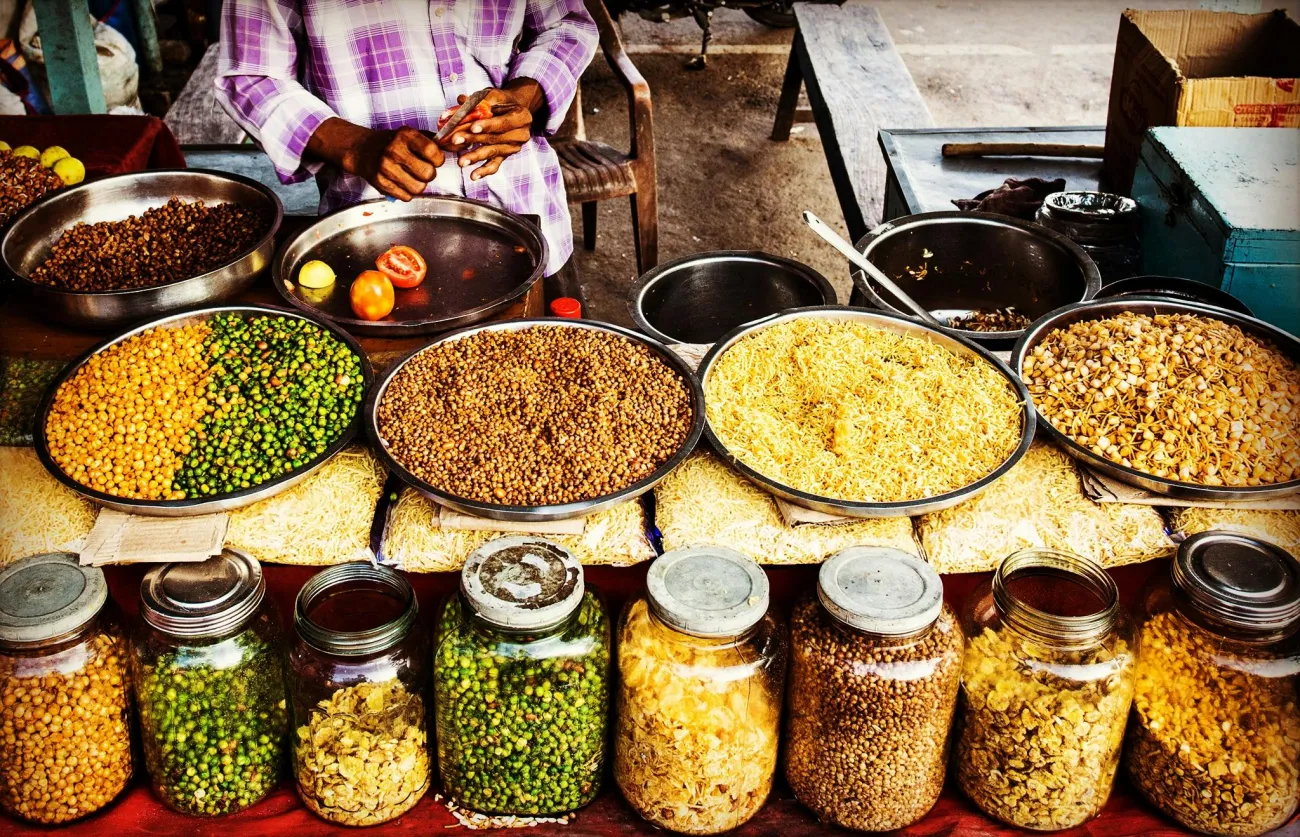FCRN member Dr Rosemary Green of the London School of Hygiene & Tropical Medicine has published a paper that calculates the greenhouse gas (GHG) emissions and water use associated with five dietary patterns in India. As shown below, GHG emissions per capita are highest for the “rice and meat” dietary pattern (at 1.2 tonnes CO2 eq. per year) and lowest for the “wheat, rice and oils” pattern (at 0.8 tonnes CO2 eq. per year). For comparison, per capita dietary GHG emissions in the UK have been estimated at 2.6 tonnes CO2 eq. per year for high meat eaters and 1.1 tonnes CO2 eq. per year for vegans (Scarborough et al., 2014). Water use is highest for the “wheat, rice and oils” pattern and lowest for the “rice and low diversity” pattern.


Image: Graphical abstract of Green et al. (2018)
The paper points out that as India goes through a nutrition transition, the “rice and low diversity” pattern - also low in energy, and currently eaten mainly by rural dwellers and farm owners - may be replaced by the other dietary patterns in the study. The study notes that shifting diets away from polished rice and towards more diverse food types could increase micronutrient intakes relative to today.
A limitation of the study is that the dietary data used under-represent people from the east and north-east of India, children and the poorest people. GHG figures were not available for all food groups; data for similar food groups were used instead.
Abstract
Agriculture is a major contributor to India's environmental footprint, particularly through greenhouse gas (GHG) emissions from livestock and fresh water used for irrigation. These impacts are likely to increase in future as agriculture attempts to keep pace with India's growing population and changing dietary preferences. Within India there is considerable dietary variation, and this study therefore aimed to quantify the GHG emissions and water usage associated with distinct dietary patterns.
Five distinct diets were identified from the Indian Migration Study – a large adult population sample in India – using finite mixture modelling. These were defined as: Rice & low diversity, Rice & fruit, Wheat & pulses, Wheat, rice & oils, Rice & meat. The GHG emissions of each dietary pattern were quantified based on a Life Cycle Assessment (LCA) approach, and water use was quantified using Water Footprint (WF) data. Mixed-effects regression models quantified differences in the environmental impacts of the dietary patterns.
There was substantial variability between diets: the rice-based patterns had higher associated GHG emissions and green WFs, but the wheat-based patterns had higher blue WFs. Regression modelling showed that the Rice & meat pattern had the highest environmental impacts overall, with 0.77 (95% CI 0.64–0.89) kg CO2e/capita/day (31%) higher emissions, 536 (95% CI 449–623) L/capita/day (24%) higher green WF and 109 (95% CI 85.9–133) L/capita/day (19%) higher blue WF than the reference Rice & low diversity pattern.
Diets in India are likely to become more diverse with rising incomes, moving away from patterns such as the Rice & low diversity diet. Patterns such as the Rice & meat diet may become more common, and the environmental consequences of such changes could be substantial given the size of India's population. As global environmental stress increases, agricultural and nutrition policies must recognise the environmental impacts of potential future dietary changes.
Reference
Green, R.F., Joy, E.J., Harris, F., Agrawal, S., Aleksandrowicz, L., Hillier, J., Macdiarmid, J.I., Milner, J., Vetter, S.H., Smith, P. and Haines, A., 2018. Greenhouse gas emissions and water footprints of typical dietary patterns in India. Science of The Total Environment, 643, pp.1411-1418.
Read the full open-access article here. You can contact Dr Green at Rosemary.Green@lshtm.ac.uk. See also the Foodsource resource What is the food system’s contribution to the global GHG emissions total?




Comments (0)